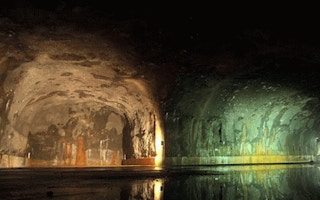Building rock caverns under reservoirs to capture storm water could be a possible solution to flooding and water shortage issues in Singapore.
Such caverns would also reduce the energy spent on desalination, said National University of Singapore (NUS) adjunct professor of engineering Lui Pao Chen.
Speaking at a talk organised by the NUS Global Asia Institute yesterday in conjunction with World Water Day, Prof Lui suggested that such facilities could be realised sooner than was expected.
“The Singapore authorities are very serious … The reason is that we’ve run out of land,” said Prof Lui, who also serves as an adviser to the National Research Foundation. “If rainfall intensity were to increase, we got no choice but to go below with tunnels.”
These tunnels could run 100m underground into rock caverns. A possible location would be below the Central Catchment Area.
National water agency PUB is already looking into the idea of using rock caverns as a “solution” to increase the capacity of Singapore’s reservoirs, Prof Lui added.
He declined to say how soon the Government would embark on such a project but said that the average cost of building such a facility is S$100 per cubic metre.
The reservoir will have a number of caverns to meet the storage capacity needed, with each cavern envisaged to be between 200,000 and 500,000 cu m.
Going underground is not alien to Singapore. Industrial developer and landlord JTC Corporation is set to finish work on the first phase of the Jurong Rock Caverns between next year and 2014.
Associate Professor Susanto Teng from the Nanyang Technological University’s Civil Engineering Department told Today that the properties of the rock will determine the size of the tunnel and cavern.
“Tests will have to be done to see if the rock is stable and can withstand pressure from above. If not, it will have to be strengthened, but this adds to cost,” he said.
When contacted, a PUB spokesperson said: “PUB will be exploring the feasibility of underground rock caverns as a possible long-term solution to store storm water.”
Meanwhile, the Government is studying global climate models and will expand canal capacity and other drainage projects over the next five years.
In the meantime, it could explore borrowing or renting basement car parks from building owners and retrofitting them into storage tanks should flooding become more frequent, said Associate Professor Liong Shie-Yui from the NUS Civil Engineering Department, who also spoke at the talk.
Storage facilities could be built from the sea bed to sea level to store water and oil or serve as warehouses, while above sea level, these concrete structures can be buildings, suggested Assoc Prof Teng.
Singapore is also exploring building cities underground. Tokyo and Montreal already have retail and commercial spaces below ground, Prof Lui said.
“The volume of the caverns for the underground city will depend on their usage. It can vary between 20,000 to 50,000 cubic metres,” he said.

















